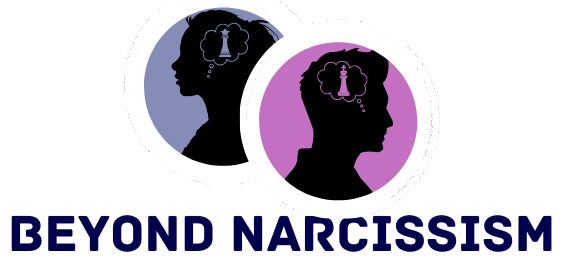Navigating a relationship with a narcissistic partner can often feel like walking a tightrope, leaving you to question your worth and the authenticity of their affection. If you’re finding yourself wondering whether a narcissist loves their new supply more, you’re not alone, and it’s a complex, yet important, question to explore. Understanding the motivations and dynamics behind a narcissist’s behavior can help you find some clarity and peace.
This topic holds significant weight because it touches on the profound emotional impact that narcissistic behavior can have on those entangled in its web. By delving into this issue, we aim to provide you with insights that can empower you to make informed decisions about your emotional well-being. Throughout this article, we’ll explore the nature of narcissistic relationships and what the presence of new supply might truly signify.
You will learn how to discern between genuine affection and manipulative tactics often employed by narcissists. We’ll also discuss ways to protect your emotional health and reclaim your sense of self-worth. Our goal is to offer practical advice and emotional support, guiding you towards a path of healing and understanding in these challenging circumstances.
1. Examining Narcissistic Relationship Patterns

Many people find themselves wondering if a narcissist can truly love someone new more than they loved them. To understand this, it’s important to examine the relationship patterns that narcissists typically exhibit.
A narcissist often thrives on the thrill of a new relationship, which can create an illusion of deeper love. This initial phase, known as “love bombing,” is less about genuine affection and more about the narcissist’s need for admiration and control.
Consider a scenario where a friend suddenly seems infatuated with a new partner, showering them with gifts and attention. This behavior is typical of narcissists, who use such tactics to establish dominance and secure a new source of emotional supply.
Experts suggest that these patterns are not about loving someone more, but about fulfilling the narcissist’s own needs. Understanding this can help someone recognize when they are caught in a similar cycle and take steps to protect themselves.
Recognizing these patterns can be liberating and empower individuals to make healthier relationship choices. By gaining insight into these dynamics, one can cultivate stronger, more fulfilling connections with others.
2. The Appeal of New Supply

In the world of a narcissist, the allure of a new supply can be captivating, much like a shiny new toy to a child. The initial rush of novelty offers them a fresh canvas on which to project their idealized self-image, often mirroring the honeymoon phase in typical relationships.
Imagine a scenario where a narcissist is drawn to someone new at a party, showering them with compliments and attention. This charm can be intoxicating, as the narcissist skillfully creates a world where the new person feels uniquely special and deeply desired.
However, this appeal often masks deeper insecurities, where the narcissist seeks to validate their own sense of worth through external admiration. An expert might suggest that the narcissist uses the new supply to reaffirm their self-esteem, relying on fresh admiration to sustain their fragile ego.
Ultimately, the new supply is often caught in a cycle that repeats itself, as the narcissist’s need for validation is never truly satisfied. Recognizing this pattern empowers individuals to make informed decisions, potentially breaking free from the cycle of temporary allure and emotional highs and lows.
3. Comparison: Old vs. New Supply

In relationships with a narcissist, the concept of old and new supply is often central to understanding their behavior. When a narcissist moves on to someone new, it can feel as though they have found a better partner, but this is rarely the case. The narcissist’s interest in the new supply is primarily driven by the novelty and excitement of a fresh source of attention.
Old supply, such as a former partner, may feel discarded or replaced when this shift occurs. However, it’s important to recognize that this dynamic isn’t about the new person being better or more lovable. Instead, it highlights the narcissist’s constant need for admiration and their inability to sustain deep, genuine connections. This pattern often repeats, leaving both old and new partners feeling undervalued.
Consider a scenario where a narcissist moves from one partner to another, leaving the former questioning their own worth. In reality, the new supply is simply another chapter in the narcissist’s ongoing quest for validation. If you find yourself in this situation, it’s crucial to focus on your own self-worth and healing rather than comparing yourself to the new person.
Experts suggest that the cycle of moving from one supply to another is a classic pattern for narcissists. This understanding highlights that the issue is not with the former partner, but rather with the narcissist’s own emotional void. Recognizing this can be empowering, allowing you to step back and see the situation more clearly, which is a crucial step in moving forward.
4. Emotional Impact on New Supply

When someone new enters a relationship with a narcissist, they may initially feel like they’ve found their soulmate. The narcissist often showers the new supply with intense affection and attention, creating a semblance of a deep emotional connection. However, as time progresses, the emotional impact can become overwhelming and draining. The new supply might start feeling confused and anxious, unable to reconcile the idealized beginning with the emerging reality.
In many cases, the new partner may notice subtle signs of manipulation or control, leading to a growing sense of unease. This emotional upheaval is not uncommon, as the narcissist’s behavior can be unpredictable and often centers around their own needs and desires. One might wonder if the initial love-bombing phase was genuine or just a tactic to secure new supply. Recognizing these patterns can help individuals make informed decisions about their emotional wellbeing.
It’s important for the new supply to maintain a strong support system outside the relationship. Trusted friends and family can provide perspective and help the new partner understand that the emotional rollercoaster is not normal or healthy. Seeking guidance from a therapist or counselor can also be invaluable in navigating these complex emotions. A professional can offer strategies to cope with potential manipulation and emotional distress.
Ultimately, the well-being of the new supply depends on their ability to recognize the signs of narcissistic behavior. By taking proactive steps to protect their emotional health, they can decide whether this relationship aligns with their personal values and needs. Understanding the impact of a narcissistic partner can empower individuals to make choices that prioritize their happiness and security.
5. Navigating Narcissistic Love Dynamics

Understanding the dynamics of a relationship with a narcissist can be challenging, especially when new supply is involved. In these scenarios, the narcissist often creates a cycle of attention and validation that can feel bewildering to those caught in its midst.
Consider Lucy, who found her partner suddenly enamored with someone new, leaving her questioning their past together. This pattern of behavior is common, as narcissists tend to idealize new partners to fulfill their need for admiration.
Experts suggest that these relationships are less about love and more about control and self-enhancement. The new supply is often unaware of the narcissist’s tactics, mistaking intense attention for genuine affection.
To navigate these dynamics, it’s crucial to recognize that the narcissist’s behavior is not a reflection of your worth. Prioritizing your emotional well-being can help you regain a sense of control and clarity in your life.
The key takeaway is that real love is consistent and nurturing, not a rollercoaster of highs and lows. By understanding these dynamics, you can make informed decisions that prioritize your happiness and peace.
Conclusion: Creating Beautiful Outdoor Spaces
In navigating the complex dynamics of narcissistic relationships, we explored five key concepts: the transient nature of a narcissist’s affection, the cycle of idealization and devaluation, the impact of self-esteem on partner selection, the illusion of “new supply” as a fix for deeper issues, and the importance of self-awareness in breaking free from these patterns. Understanding that a narcissist’s love is often more about filling their own voids than genuine connection can be both enlightening and liberating.
As an immediate step, take a moment to reflect on your own relationship dynamics. Consider journaling your thoughts and feelings to gain clarity and prioritize your emotional well-being. Remember, fostering self-awareness and self-love is crucial in nurturing healthy relationships.
For future reference and continued growth, save this article. It serves as a reminder and guide as you navigate your journey toward fulfilling connections. With this knowledge, you are empowered to embark on a path of authentic relationships, where love is mutual and deeply rooted in respect and understanding. Embrace the possibility of a brighter, more connected future. Your relationship success story begins today.
